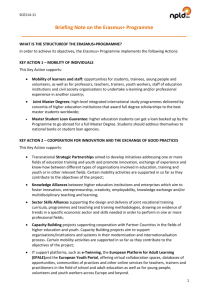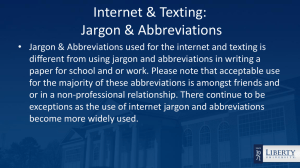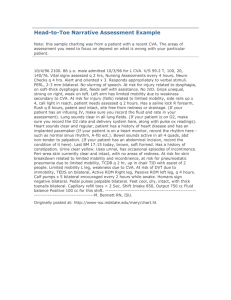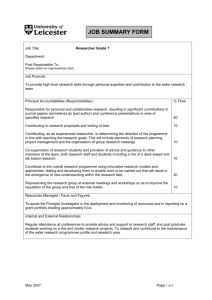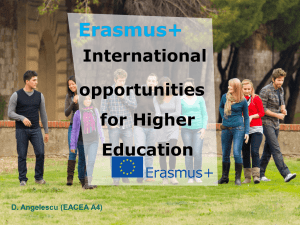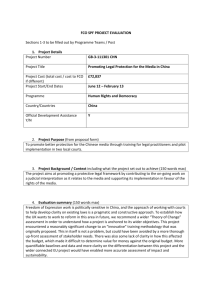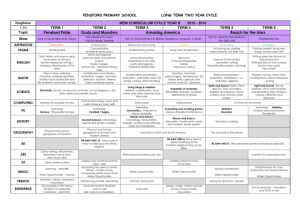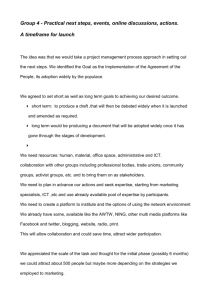Annex VII of the Funding Contract no. …......... Project Information for
advertisement
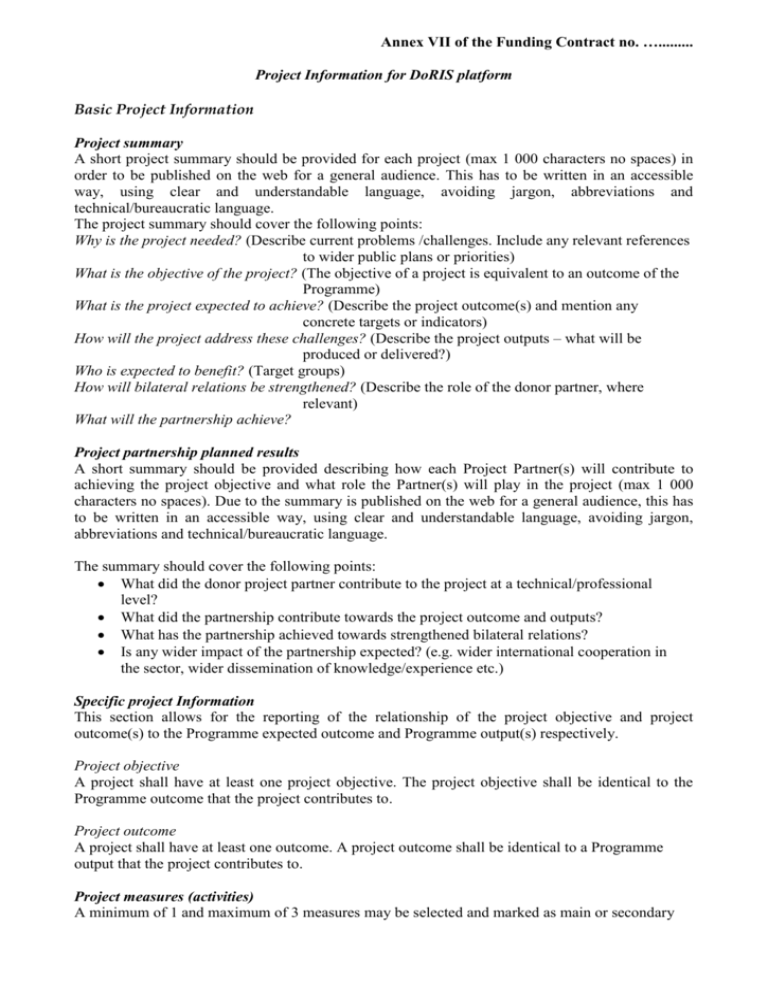
Annex VII of the Funding Contract no. …......... Project Information for DoRIS platform Basic Project Information Project summary A short project summary should be provided for each project (max 1 000 characters no spaces) in order to be published on the web for a general audience. This has to be written in an accessible way, using clear and understandable language, avoiding jargon, abbreviations and technical/bureaucratic language. The project summary should cover the following points: Why is the project needed? (Describe current problems /challenges. Include any relevant references to wider public plans or priorities) What is the objective of the project? (The objective of a project is equivalent to an outcome of the Programme) What is the project expected to achieve? (Describe the project outcome(s) and mention any concrete targets or indicators) How will the project address these challenges? (Describe the project outputs – what will be produced or delivered?) Who is expected to benefit? (Target groups) How will bilateral relations be strengthened? (Describe the role of the donor partner, where relevant) What will the partnership achieve? Project partnership planned results A short summary should be provided describing how each Project Partner(s) will contribute to achieving the project objective and what role the Partner(s) will play in the project (max 1 000 characters no spaces). Due to the summary is published on the web for a general audience, this has to be written in an accessible way, using clear and understandable language, avoiding jargon, abbreviations and technical/bureaucratic language. The summary should cover the following points: What did the donor project partner contribute to the project at a technical/professional level? What did the partnership contribute towards the project outcome and outputs? What has the partnership achieved towards strengthened bilateral relations? Is any wider impact of the partnership expected? (e.g. wider international cooperation in the sector, wider dissemination of knowledge/experience etc.) Specific project Information This section allows for the reporting of the relationship of the project objective and project outcome(s) to the Programme expected outcome and Programme output(s) respectively. Project objective A project shall have at least one project objective. The project objective shall be identical to the Programme outcome that the project contributes to. Project outcome A project shall have at least one outcome. A project outcome shall be identical to a Programme output that the project contributes to. Project measures (activities) A minimum of 1 and maximum of 3 measures may be selected and marked as main or secondary measure. Main measure = main focus of the project in terms of budget or human resource dedicated Secondary measures = other important measures It could be choosen one main measure with the possibility to choose up to two secondary measures. Categories of measures (activities): - Research; Research and experimental development (R&D) comprise creative work undertaken on a systematic basis in order to increase the stock of knowledge, including knowledge of man, culture and society, and the use of this stock of knowledge to devise new applications. - Infrastructure development and provision of equipment; - Capacity building: Capacity is the ability of individuals, organisations and the broader system or enabling environment to perform their functions effectively, efficiently and sustainably. Capacity building is defined as: i. Human resources development, In the context of organizational development, ii. Institutional and organisational development, including development of systems, management structures, and procedures, not only within organisations but also the management of relationships between the different organisations and sectors (public, private and community), and development of beneficiary participation (men/women) iii. Development of an enabling environment with appropriate legal frameworks. - Provision of services - Information and awareness raising. Information specific to research projects under any Programme Area This section must be completed in case “Research” is chosen as one of the Projects measures. It has to be specified if the project is included in one of the three types of research mentioned in the following table. Basic research Study of the causal relations between economic conditions and social development Study of the social structure and the sociooccupational mobility of a society, i.e. its composition and changes in socio‐occupational strata, social classes, etc. Study of the role of the family in different civilisations past and present Study of the reading process in adults and children, i.e. Applied research Study of the economic and social causes of the drift of agricultural workers from rural districts to towns, for the purpose of preparing a programme to halt this development in order to support agriculture and prevent social conflicts in industrial areas to foresee future consequences of recent trends in social mobility Study of the role and position of the family in a specific country or a specific region at the present time for the purpose of preparing relevant social measures Study of the reading process for the purpose of developing a Experimental development Development and testing of a programme of financial assistance to prevent rural migration to large cities Development and testing of a programme to stimulate upward mobility among certain social and ethnic groups Development and testing of a programme to maintain family structure in low‐income working groups Development and testing of a special reading programme investigating how human visual systems work to acquire information from symbols such as words, pictures and diagrams new method of teaching children and adults to read among immigrant children
